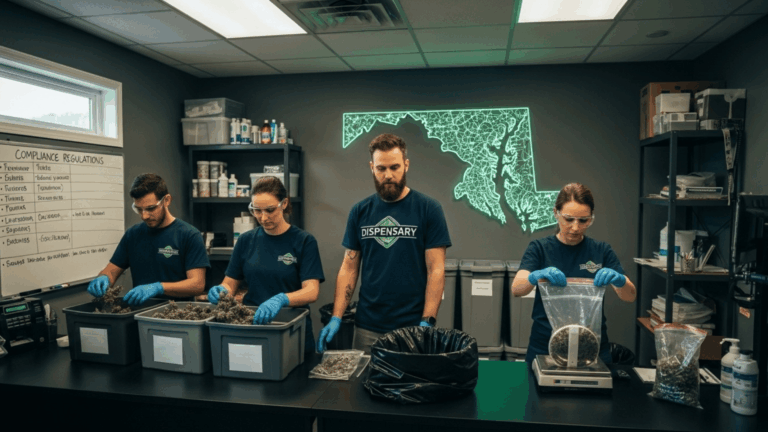As an Ohio cannabis dispensary owner, you’re navigating a booming industry with unique financial hurdles. With recreational sales kicking off in late 2024 and continuing strong into 2025, tax expenses can eat into your profits if not managed wisely. Federal rules like Section 280E limit deductions, while state excise and sales taxes add layers of complexity. But with smart strategies, you can optimize tax expenses and keep more revenue in your business. This guide breaks down key tactics tailored for Ohio dispensaries, helping you reduce your tax bill while staying compliant.
Whether you’re a new operator or scaling up, optimizing tax expense for Ohio cannabis dispensaries starts with understanding the rules and leveraging allowable deductions. Let’s dive in.
Understanding Ohio Cannabis Taxes: Federal, State, and Local Breakdown
Before optimizing, know what you’re up against. Ohio’s cannabis tax landscape includes federal income taxes, state excise and sales taxes, and potential local levies.
- Federal Taxes: Cannabis remains a Schedule I substance under the Controlled Substances Act as of July 2025, triggering IRC Section 280E. This prohibits deducting ordinary business expenses like rent, marketing, or utilities from your gross income. However, you can deduct the Cost of Goods Sold (COGS), which includes direct costs tied to inventory.
- State Excise Tax: Ohio imposes a 10% excise tax on recreational cannabis sales at dispensaries. This is collected at the point of sale and remitted to the state. Medical sales are exempt from this but subject to regular sales tax.
- State Sales Tax: A 5.75% state sales tax applies to both recreational and medical cannabis, plus local taxes that can push the total to 15.75%–17.5% depending on your county.
- State Income Tax: Ohio conforms to federal rules, meaning Section 280E restrictions apply here too—no deductions for non-COGS expenses on your state return.
Recent proposals to hike the excise tax to 20% or more have stalled in the legislature as of mid-2025, so the 10% rate holds for now.dispatch.com Accurate tracking of these taxes is crucial to avoid penalties and optimize your bottom line.
Navigating Section 280E: The Biggest Federal Tax Hurdle
Section 280E is the elephant in the room for cannabis businesses. It disallows deductions for expenses incurred in “trafficking” controlled substances, leading to effective tax rates as high as 70% for some operators. For Ohio dispensaries, this means you can’t deduct:
- Rent or utilities for your storefront.
- Marketing and advertising costs.
- Employee salaries not directly tied to inventory.
The silver lining? COGS remains deductible. This includes costs like purchasing product from cultivators, packaging, and certain labor for handling inventory.greengrowthcpas.com Rescheduling marijuana to Schedule III has been proposed but remains stalled as of July 2025, so 280E still applies fully.
To optimize under 280E, focus on aggressive but compliant COGS allocation. Use IRC Section 471(c) to adopt internal accounting methods that capitalize more expenses into inventory costs.
Key Strategies to Maximize COGS and Reduce Taxable Income
Optimizing tax expense for Ohio cannabis dispensaries hinges on inflating COGS legally. Here’s how:
- Detailed Inventory Tracking: Implement robust point-of-sale (POS) systems like Flowhub to track every gram from purchase to sale. This ensures accurate COGS calculations, including freight-in costs and spoilage allowances.flowhub.com In Ohio, where purchase limits are now up to 2.5 ounces of flower, precise inventory helps avoid overstocking and waste.
- Allocate Indirect Costs: Under IRS guidelines, include indirect expenses like quality testing, storage, and certain supervisory labor in COGS. For example, if a manager oversees product intake, portion their salary here.
- Separate Business Entities: Consider structuring your dispensary to isolate non-280E activities. For instance, create a separate entity for merchandise sales (e.g., apparel) or consulting services, allowing full deductions there.
- Leverage Depreciation: While limited, depreciate equipment used in inventory handling, like scales or storage units, as part of COGS.
By maximizing COGS, dispensaries can reduce taxable income significantly—some report savings of 20-30% on their tax bill.
State and Local Tax Optimization Tips for Ohio Dispensaries
Ohio’s taxes offer some wiggle room for optimization:
- Excise Tax Compliance: Automate excise tax calculations in your POS to avoid errors. Remit on time to dodge penalties, and track revenue allocation—36% goes to social equity programs, but this doesn’t directly affect your deductions.
- Sales Tax Strategies: Charge and collect sales tax accurately. If your dispensary sells non-cannabis items (e.g., accessories), separate them to potentially lower the overall tax rate on those sales.
- Local Tax Awareness: Counties can add up to 1.5% in sales tax. Choose locations wisely or lobby for favorable local policies. No local excise taxes are allowed yet, but monitor changes.
Since Ohio conforms to federal 280E for state income taxes, the same COGS strategies apply here. However, explore state-specific credits for energy efficiency or job creation if your operations qualify outside cannabis trafficking.
The Role of Record-Keeping and Professional Help
Poor records can lead to audits and disallowed deductions. Use cannabis-specific accounting software to categorize expenses meticulously. Maintain audits trails for COGS claims, as IRS scrutiny is high in this industry.
Partner with CPAs experienced in Ohio cannabis taxes, like those from GreenGrowth CPAs or local firms. They can help with quarterly estimates, 280E workarounds, and staying ahead of legislative changes—like potential tax hikes.
Conclusion: Take Control of Your Tax Expenses Today
Optimizing tax expense as an Ohio cannabis dispensary owner means mastering COGS, staying compliant with state excise and sales taxes, and preparing for federal shifts. With recreational sales generating over $479 million by April 2025, the stakes are high—but so are the savings opportunities.policymattersohio.org Implement these strategies to potentially slash your effective tax rate and fuel growth.
Ready to optimize? Book a strategy meeting with one of our cannabis CPAs today.
You bring the vision—we’ll help protect the profit.




